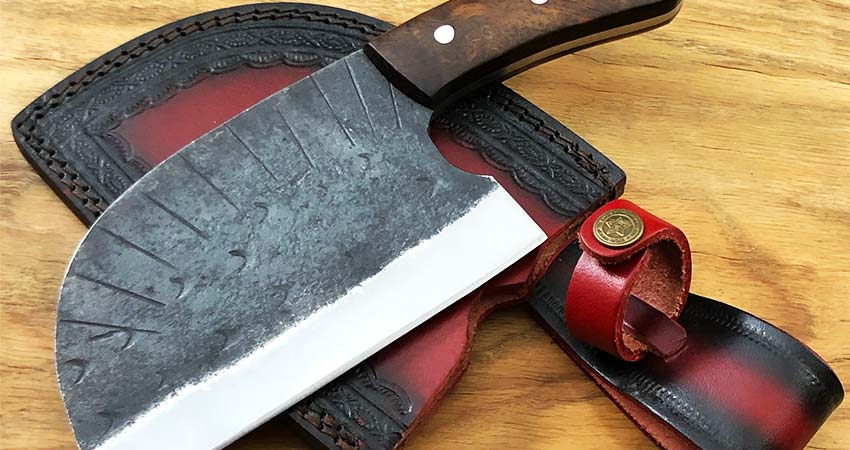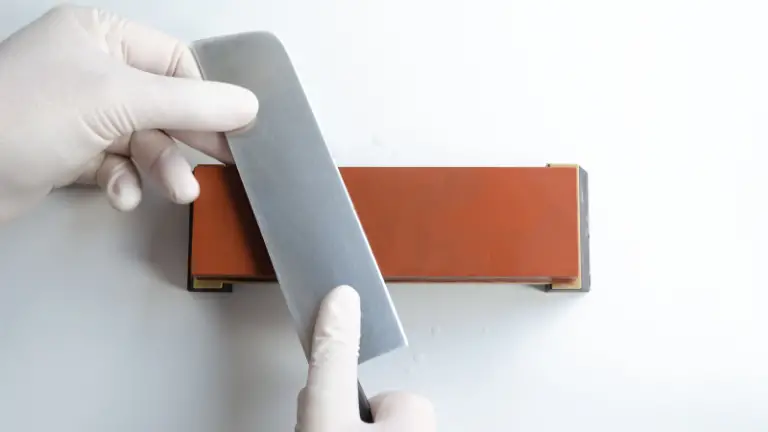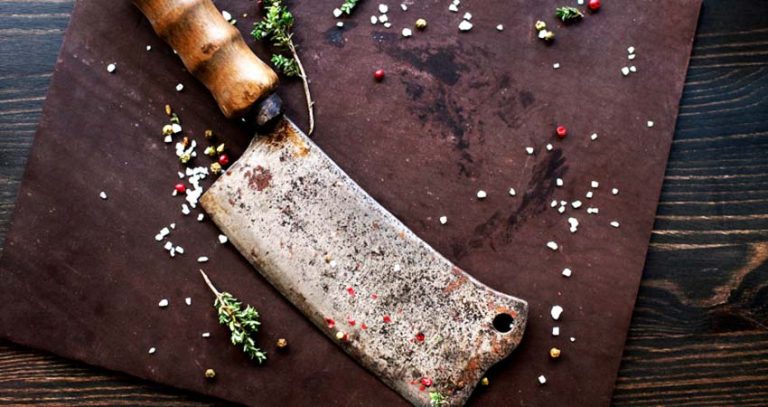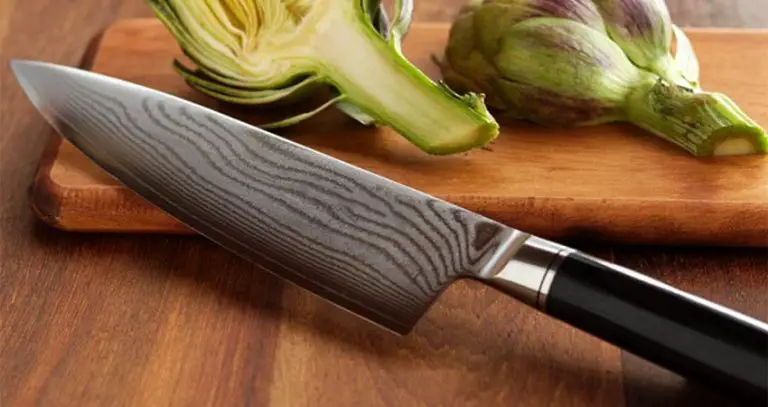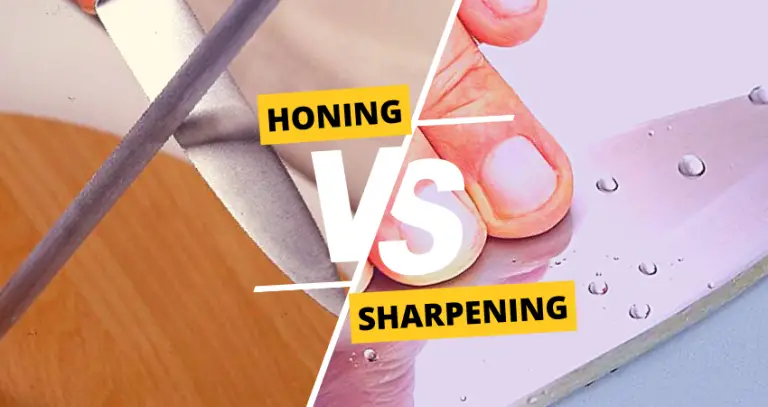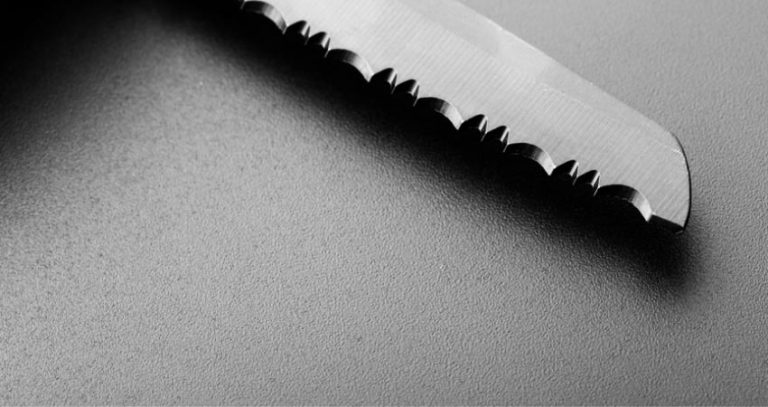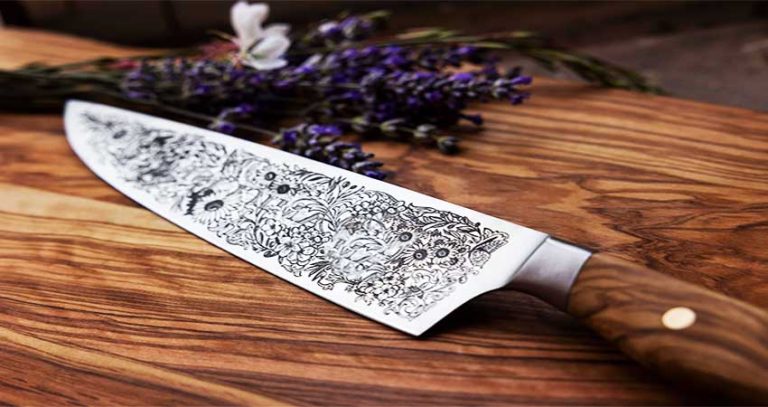How To Clean A Serbian Chef Knife?
When you cook with a Serbian chef knife, it’s bound to get dirty while showcasing its versatility.
It’s a sign of quality when your chef knife is in need of a good wash, but sometimes a more thorough cleaning is needed. The good news is that the cleaning methods are easy to do and can be done by anyone willing to put in the time and effort.
So, let’s learn how to clean a Serbian chef knife, so you can keep it nice and shiny and ready for each feast.
Guidelines For General Cleaning
To keep your prized Serbian knife looking its sharpest, you need to clean it regularly, ideally after each use.
The process need not always be thorough; it can be as simple as using a damp cloth to wipe down the blade and then a dry one to polish it back to perfection.
You can adhere to the simple cleaning rule listed below.
- Wash the knife in soap and water.
- Use a scouring pad to remove any grime.
- Wipe away excess dirt and grime with a damp cloth.
- Dry the knife off with a clean towel.
- Store the knife in a dry place.
How To Clean A Serbian Chef Knife (Deep Clean)
While a general cleaning will be good enough to keep your chef knife in good working order, there will come a time when you need to deep clean your knife.
Especially since these knives are made of carbon steel, you’ll often get rust on them as you wet them while cooking. And it’s not uncommon for stains and grime to settle deeply into its grooves.
With that in mind, here are three ways to remove any type of stains from a Serbian chef knife.
Method-1: The White Vinegar Method
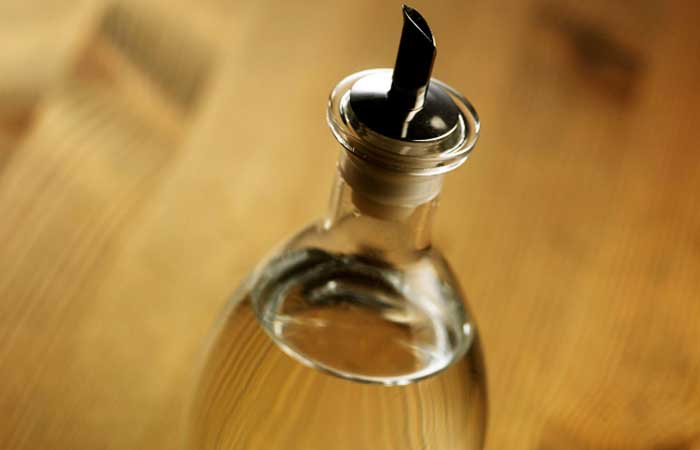
It is possible to remove stubborn stains and even rust from your Serbian chef knife using white vinegar. The ingredient is not only an excellent all-purpose cooking staple but also an exceptional cleaning agent.
White vinegar is rich in acetic acid, which thoroughly dissolves rust from your Serbian knife’s carbon steel.
Moreover, its efficiency makes it a popular choice among professionals, as it can remove rust from industrial metal tools, including blades made of stainless steel.
It’s also the safest method you can use daily, as it doesn’t negatively impact any carbon steel or stainless steel blade. But be sure only to use white vinegar for the following procedure, as other types could cause your knife to lose its color.
You’ll need-
- White vinegar
- Water
- Dishwashing soap
- Wire brush or steel wool
Steps to follow:
- Fill a tall glass or bowl with white vinegar.
- Let the knife soak in white vinegar. Keep it there for an entire night to allow the rust and stain to dissolve well.
- After soaking, scrub the knife’s blade with steel wool or a wire brush for any remaining rust.
- If you still have persisting leftovers, keep the knife in vinegar for several hours longer.
- Once the rust has gone completely, wash the knife’s blade with soap and water. Don’t forget to dry it thoroughly afterward to keep rust from accumulating again.
Method-2: The Baking Soda Method
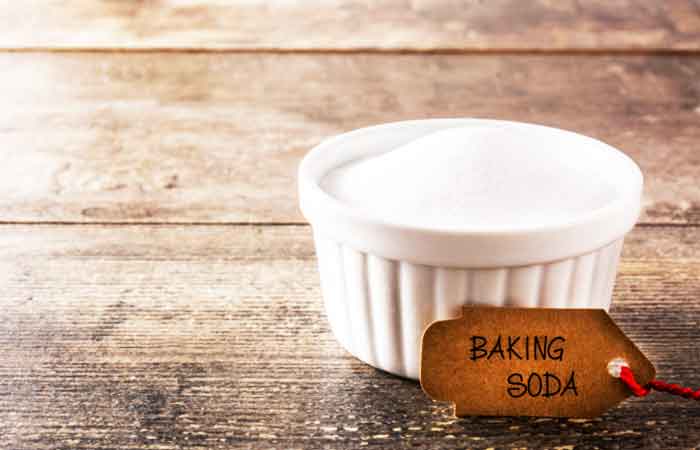
Another household ingredient with multiple uses is baking soda. Besides being a versatile cooking ingredient, it serves as a handy cleaning agent.
It works well when removing rust and tough grime on thinner metal items, including Serbian chef knives. In fact, it’s the fastest route to eliminate rust when you’re hurrying.
However, since baking soda loses its metallic properties over time, it may not be the best option to clean your Serbian knife regularly.
Here are the ingredients you’ll need:
- Water
- Baking soda
- Wire brush or steel wool
Steps to follow:
- Prepare a thick, white paste by mixing baking soda with water.
- Smear the mixture in all directions on your Serbian knife’s blade. If your knife has rust stains, make sure they are well-covered.
- Let the mixture sit on your knife well. Ideally, you’ll want to leave it that way for at least a couple of hours.
- When the wait is over, scrub the knife’s blade with the wire brush or steel wool to remove all the loosened stains and rust.
- Next, wash the paste off the blade with water before drying the knife thoroughly.
Method-3: The Salt And Lemon Method
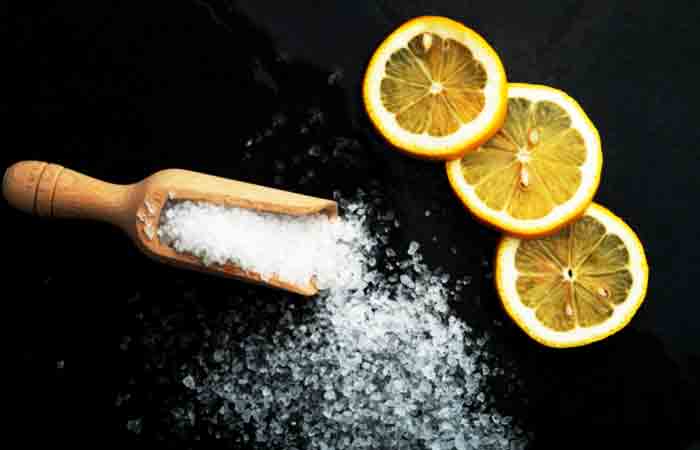
Salt and lemon can work together to create powerful rust and water-stain-removing combinations. The acidity in lemon helps attack rust, while the sharpness in salt helps scrub it off.
Lemon is also rich in ascorbic acid, an excellent treatment for persistent water spots.
For this method, you’ll need-
- Salt
- Lemon juice and rind
- Water
- Wire brush or steel wool
Steps to follow:
Put salt all over the stains on your knife.
- Apply lemon juice to the blade’s salt-covered areas.
- Let the mixture sit on the blade for at least three hours.
- Next, scrub the knife with a lemon rind or a wire brush.
- Finally, wash off the salt and lemon residue before drying it out thoroughly.
Serbian Chef Knives: Additional Care Tips
Here are a few additional tips to take care of your Serbian chef knife.
- Wipe your knife immediately each time after using it on greasy food.
- It is better to clean multiple knives individually rather than together to avoid abrasion.
- Similarly, do not put the blade in the dishwasher.
- Sharpen your knife at least twice a year using a 20-23-degree angle.
- A plastic or wooden chopping board is ideal for these knives instead of iron boards.
- As time passes, the blade will develop a natural patina. A patina isn’t rust; instead, it’s a protector against it. Hence, you shouldn’t remove it.
- To preserve the sharpness and shine, oil the blade with food-grade mineral oil (like canola or olive).
FAQs
How to clean water spots off Serbian chef knives?
We recommend using the salt and lemon method discussed above to clean water spots off a chef knife.
Can you use WD-40 on a Serbian chef knife?
Your Serbian knife will be fine with WD-40. It will not cause any damage. However, it isn’t the best lubricant for your knife either. Since it lacks a protective layer, lint and dust can stick to it easily.
What kind of oil should you use on a Serbian Chef knife?
As with any culinary knife, vegetable, canola, olive, or sunflower oil is ideal for your Serbian knife.
How often should you oil a Serbian Chef Knife?
The frequency of cleaning and oiling your knife will depend on how you use it. Once or twice per year should suffice for the average person.
Conclusion
The Serbian chef knife is a traditional, heavy-duty kitchen knife that’s made to last. It’s intended for cutting tough veggies, meats, and even though bones.
Since it’s designed to be used on the toughest of food items, you’ll need to take extra care when cleaning it.
And now that you know how to clean a Serbian chef knife, you should have no trouble cleaning any knife you have. So, have fun cleaning your expensive knives, and do come back and tell us how it went.

